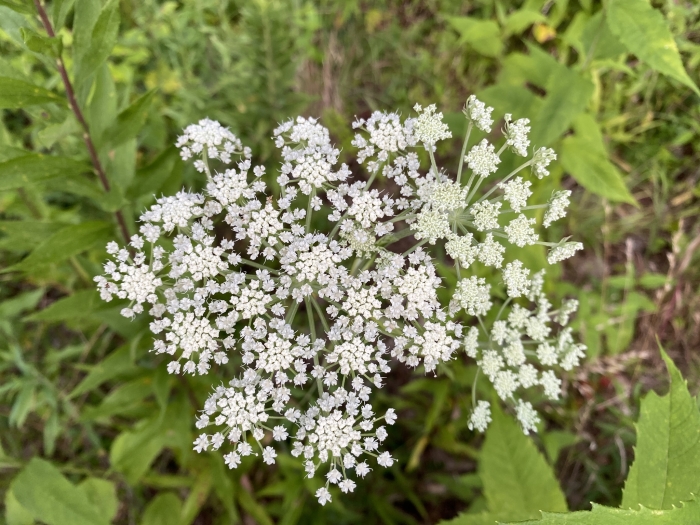Hairy Angelica
(Angelica venenosa)
Hairy Angelica (Angelica venenosa)
/
/

Emily Summerbell
CC BY 4.0
Image By:
Emily Summerbell
Recorded By:
Copyright:
CC BY 4.0
Copyright Notice:
Photo by: Emily Summerbell | License Type: CC BY 4.0 | License URL: http://creativecommons.org/licenses/by/4.0/ | Rights Holder: Emily Summerbell | Publisher: iNaturalist | Date Created: 2020-07-05T00:23:59Z |



















































Estimated Native Range
Summary
Angelica venenosa, commonly known as Hairy Angelica, is a deciduous perennial herb native to a variety of habitats including open woodlands, forest edges, and moist meadows in the Eastern United States. It typically grows to a height of 3-6 feet (0.9-1.8 meters) and a width of 0.5-2 feet (0.2-0.6 meters). This plant features compound leaves and umbels of cream-colored flowers that bloom in the summer, which are moderately showy and attract pollinators.
Hairy Angelica is valued for its naturalistic appearance and is often used in wildflower gardens, borders, and as part of native plantings. It thrives in full sun to part shade and prefers moist, well-drained soils, although it can tolerate periods of drought once established. While not commonly used for culinary or medicinal purposes, it is a host plant for the Black Swallowtail butterfly, adding ecological value to the garden. Gardeners should be cautious as the sap can cause skin irritation in some individuals.CC BY-SA 4.0
Hairy Angelica is valued for its naturalistic appearance and is often used in wildflower gardens, borders, and as part of native plantings. It thrives in full sun to part shade and prefers moist, well-drained soils, although it can tolerate periods of drought once established. While not commonly used for culinary or medicinal purposes, it is a host plant for the Black Swallowtail butterfly, adding ecological value to the garden. Gardeners should be cautious as the sap can cause skin irritation in some individuals.CC BY-SA 4.0
Plant Description
- Plant Type: Herb
- Height: 3-6 feet
- Width: 0.5-1.5 feet
- Growth Rate: Moderate
- Flower Color: Cream
- Flowering Season: Summer
- Leaf Retention: Deciduous
Growth Requirements
- Sun: Full Sun
- Water: Medium, High
- Drainage: Medium, Fast
Common Uses
Bee Garden, Bird Garden, Butterfly Garden, Deer Resistant, Low Maintenance
Natural Habitat
Native to open woodlands, forest edges, and moist meadows in the Eastern United States
Other Names
Common Names: Venous Angelica
Scientific Names: , Angelica venenosa, Angelica villosa, Archangelica hirsuta, Angelica hirsuta, Archangelica villosa, Cicuta venenata, Cicuta venenosa, Ferula villosa,
GBIF Accepted Name: Angelica venenosa (Greenway) Fernald